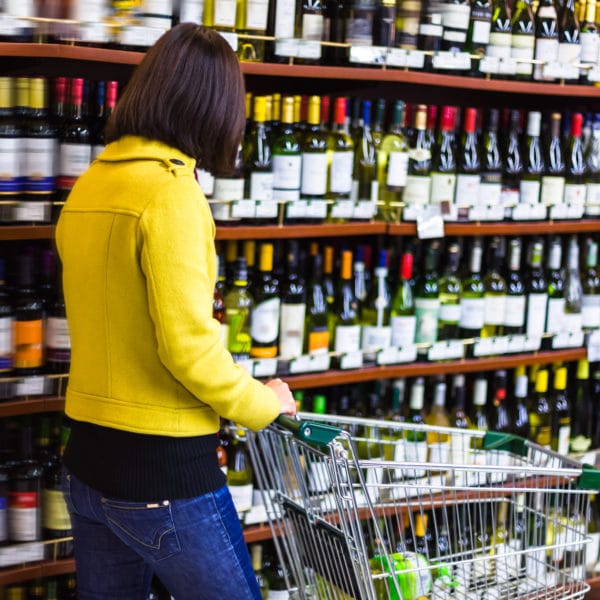The global wine market is impacted by both cyclical and structural factors. The Covid-19 pandemic has led to a growing interest in “second wines” and a boom in web sales. From a structural point of view, the demand for organic wines is soaring.
The impacts of the Covid crisis on global wine consumption
The impacts of global warming on vines worldwide
Exponential growth in organic wine consumption
2020’s boom in online wine sales
The impacts of the Covid crisis on global wine consumption
Increased consumption of low-priced wines
In 2020, Covid led to the closure of bars, restaurants, clubs, and duty-free shops in many countries. As a result, wine consumption has fallen and is now almost exclusively at home.
The growth in exports of bulk wines (+2.5% in value between September 2019 and September 2020) and of Bag-in-Box wines (2 to 10 litre containers) (+4.7% between September 2019 and September 2020) shows that consumption of entry-level wines has increased, while global exports of bottled wines fell sharply (-6% in value for still wines and -14% for sparkling wines).
It should be noted that entry-level wines tend to be produced in Spain (Castilla La Mancha), Chile and certain regions of Italy (Puglia, Sicily).
The top end of the market is doing well
The popularity of fine wines – those traditional wines with a unique taste, and very high prices – is still on the rise because demand is still there. With the health crisis, there is a growing interest in “second wines”, also fine wines but generally less expensive.
“Iconic” or “ultra-premium” wines are produced in France, in Bordeaux, Burgundy and Alsace, in the United States in Napa Valley (California), in Italy, in Tuscany and, in more limited quantities, in Germany, Chile, New Zealand and Australia.
The mid-range market is suffering due to the pandemic
Mid-range wines are the ones that are suffering most from the economic crisis. This heterogeneous market is present in many countries. The New World countries are well known for producing good mid-range wines: South Africa, Australia, New Zealand (Sauvignon Blanc), Argentina (half of the exports are Malbec), California, Chile (a third of the plantings are Cabernet Sauvignon). In France, Languedoc-Roussillon is also positioned in the mid-range.
The most popular red grape varieties worldwide are Merlot, Cabernet Sauvignon, Shiraz and Pinot Noir. For whites, Sauvignon Blanc and Chardonnay are in demand.
The impacts of global warming on vines worldwide
Although global wine-growing surface areas remained stable in 2018, the situation varies from region to region, according to the OIV (International Organisation of Vine and Wine) The area under vines in ‘old Europe’ remains constant, while in many countries the area under vines is shrinking, either by choice, to grow more profitable crops or because of difficult climate conditions, as teacher-researcher Kees Van Leeuwen explains in this article.
Here is how areas under vines have evolved by region.
- South Africa: -0.2% in area in 2019
- United States: -1% in area as vines face competition from almond trees and cannabis plantations in some regions
- Argentina: the area has fallen by 3,600 hectares, mainly because of the drought, although on the other hand the Malbec variety is increasing
- Australia: area has remained largely stable
- China: one of the only countries where there has been significant growth in area under vines: +10,000 hectares in recent years (estimates of vine planting in China are not very precise).
Exponential growth in organic wine consumption
In 2019, organic wine consumption reached 802 million bottles worldwide. The forecast is for 976 million bottles to be sold by 2023. In 2019, the leading consumer of organic wines in the world was Germany (151 million bottles of organic wines consumed). In three years’ time, Germany is expected to be overtaken by France, where consumption is expected to grow by 71% between 2018 and 2023. The United States is the third largest consumer of organic wine. Consumers are more concerned about their well-being, and organically produced wines meet these expectations.
2020’s boom in online wine sales
The last major trend to take off with Covid has been the sale of alcoholic beverages on the Internet. According to the IWSR, in Australia, Brazil (the leading country for online purchases of alcoholic beverages), China, Germany, Italy, France, Japan, the United Kingdom, the United States and Spain, online sales of alcoholic beverages have boomed: +40% in value, reaching $17 billion in 2020. By 2024, sales are expected to reach $40 billion.
Online sales have expanded with the arrival of new producers and the development of marketplacesThe arrival of new consumers has also boosted growth.
With thanks to Alfredo Coelho, teacher at Bordeaux Sciences Agro for providing the figures for this article.
Would you like to study viticulture and wine economics at Bordeaux Sciences Agro in France?
See the degree programme for Master of Science in Vineyard and Winery Management
